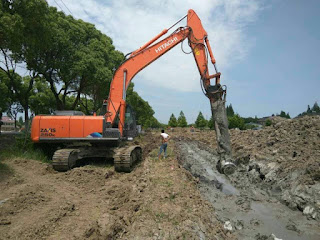How to evaluate the pollution of farmland soil in China
At present, most of the farmland soil pollution is evaluated by the two level standard of soil environmental quality standard (GB15618-1995) promulgated in 1995, and some of them use the upper limit of soil environmental background value to evaluate farmland soil pollution. That is: if lower than the upper limit of the environmental background value is considered to be basically good, and the utilization of farmland soil is not restricted. if higher than the upper limit of environmental background value and below two level standard of soil environmental quality standard, it indicates that there is no pollution yet, the utilization of farmland soil is generally not limited, but the pollution source should be analyzed and controlled. Higher than the standard value of the two level of the soil environmental quality standard, it indicates that it is polluted.
The soil environmental quality standard (GB15618-1995) and the soil pollution index (measured value / two standard value) method, grading evaluation of farmland soil pollution, soil pollution index will be subdivided into 1.0 – 2.0, 2.0 – 3.0, if more than 3.0, respectively for the mild pollution, moderate pollution, severe pollution.
In August 31, 2017, the Ministry of environmental protection, [2017]1385, issued the “soil pollution risk management and control standard, agricultural land pollution risk screening value and control value (Trial Implementation)” (Draft). The new standard stipulates the screening value and control value of soil pollution risk for agricultural land, and the requirements for monitoring, implementation and supervision.
Risk screening values refers to the limit of the amount of pollutants in the soil which may have adverse effects on the safety of edible agricultural products, the growth of crops or the ecological environment. The amount of pollutants in soil is lower than that of this value, and the risk of agricultural products exceeding the standard is negligible.
Risk intervention values refers to the limit of the content of the main pollutants in the soil when the quality and safety of the edible agricultural products may be seriously endangered. The content of pollutants in soil is higher than that of this value, and the risk of agricultural products exceeding the standard is very high.
Standard: when the concentration of pollutants in the soil below the risk screening value, agricultural products exceed the standard risk can be ignored; when the concentration of pollutants in the soil is higher than the risk screening value, risk is lower than the control values, there are risks of agricultural products exceed the standard, combined with the specific needs of the agricultural product quality collaborative investigation determined. When the content of pollutants in the soil is higher than the risk control value, the risk of agricultural products exceeding
standard is very high, and it is difficult to reduce the risk of exceeding the standard of agricultural products through such measures as agronomy regulation and substitution planting.
PARFECT soil stabilization equipment can transfer the soil binder through the air compressor to the mixing head which is mounted on the excavator, and mix with the soil to improve the strength of the foundation.
Learn more about in situ soil stabilization
The soil environmental quality standard (GB15618-1995) and the soil pollution index (measured value / two standard value) method, grading evaluation of farmland soil pollution, soil pollution index will be subdivided into 1.0 – 2.0, 2.0 – 3.0, if more than 3.0, respectively for the mild pollution, moderate pollution, severe pollution.
In August 31, 2017, the Ministry of environmental protection, [2017]1385, issued the “soil pollution risk management and control standard, agricultural land pollution risk screening value and control value (Trial Implementation)” (Draft). The new standard stipulates the screening value and control value of soil pollution risk for agricultural land, and the requirements for monitoring, implementation and supervision.
Risk screening values refers to the limit of the amount of pollutants in the soil which may have adverse effects on the safety of edible agricultural products, the growth of crops or the ecological environment. The amount of pollutants in soil is lower than that of this value, and the risk of agricultural products exceeding the standard is negligible.
Risk intervention values refers to the limit of the content of the main pollutants in the soil when the quality and safety of the edible agricultural products may be seriously endangered. The content of pollutants in soil is higher than that of this value, and the risk of agricultural products exceeding the standard is very high.
Standard: when the concentration of pollutants in the soil below the risk screening value, agricultural products exceed the standard risk can be ignored; when the concentration of pollutants in the soil is higher than the risk screening value, risk is lower than the control values, there are risks of agricultural products exceed the standard, combined with the specific needs of the agricultural product quality collaborative investigation determined. When the content of pollutants in the soil is higher than the risk control value, the risk of agricultural products exceeding
standard is very high, and it is difficult to reduce the risk of exceeding the standard of agricultural products through such measures as agronomy regulation and substitution planting.
PARFECT soil stabilization equipment can transfer the soil binder through the air compressor to the mixing head which is mounted on the excavator, and mix with the soil to improve the strength of the foundation.
Learn more about in situ soil stabilization


评论
发表评论